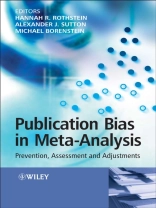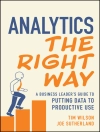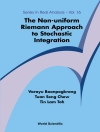Publication bias is the tendency to decide to publish a study based
on the results of the study, rather than on the basis of its
theoretical or methodological quality. It can arise from selective
publication of favorable results, or of statistically significant
results. This threatens the validity of conclusions drawn from
reviews of published scientific research.
Meta-analysis is now used in numerous scientific disciplines,
summarizing quantitative evidence from multiple studies. If the
literature being synthesised has been affected by publication bias,
this in turn biases the meta-analytic results, potentially
producing overstated conclusions. Publication Bias in
Meta-Analysis examines the different types of publication bias,
and presents the methods for estimating and reducing publication
bias, or eliminating it altogether.
Written by leading experts, adopting a practical and
multidisciplinary approach.
Provides comprehensive coverage of the topic including:
* Different types of publication bias,
* Mechanisms that may induce them,
* Empirical evidence for their existence,
* Statistical methods to address them,
* Ways in which they can be avoided.
* Features worked examples and common data sets throughout.
* Explains and compares all available software used for analysing
and reducing publication bias.
* Accompanied by a website featuring software, data sets and
further material.
Publication Bias in Meta-Analysis adopts an
inter-disciplinary approach and will make an excellent reference
volume for any researchers and graduate students who conduct
systematic reviews or meta-analyses. University and medical
libraries, as well as pharmaceutical companies and government
regulatory agencies, will also find this invaluable.
Table des matières
Preface.
Acknowledgements.
Notes on Contributors.
Chapter 1: Publication Bias in Meta-Analysis (Hannah R.
Rothstein, Alexander J. Sutton and Michael Borenstein).
Part A: Publication bias in context.
Chapter 2: Publication Bias: Recognizing the Problem,
Understanding Its Origins and Scope, and Preventing Harm (Kay
Dickersin).
Chapter 3: Preventing Publication Bias: Registries and
Prospective Meta-Analysis (Jesse A. Berlin and Davina Ghersi).
Chapter 4: Grey Literature and Systematic Reviews (Sally
Hopewell, Mike Clarke and Sue Mallett).
Part B: Statistical methods for assessing publication
bias.
Chapter 5: The Funnel Plot (Jonathan A.C. Sterne, Betsy Jane
Becker and Matthias Egger).
Chapter 6: Regression Methods to Detect Publication and Other
Bias in Meta-Analysis (Jonathan A.C. Sterne and Matthias
Egger).
Chapter 7: Failsafe N or File-Drawer Number (Betsy Jane
Becker).
Chapter 8: The Trim and Fill Method (Sue Duval).
Chapter 9: Selection Method Approaches (Larry V. Hedges and Jack
Vevea).
Chapter 10: Evidence Concerning the Consequences of Publication
and Related Biases (Alexander J. Sutton).
Chapter 11: Software for Publication Bias (Michael
Borenstein).
Part C: Advanced and emerging approaches.
Chapter 12: Bias in Meta-Analysis Induced by Incompletely
Reported Studies (Alexander J. Sutton and Therese D. Pigott).
Chapter 13: Assessing the Evolution of Effect Sizes over Time
(Thomas A. Trikalinos and John P.A. Ioannidis).
Chapter 14: Do Systematic Reviews Based on Individual Patient
Data Offer a Means of Circumventing Biases Associated with Trial
Publications? (Lesley Stewart, Jayne Tierney and Sarah
Burdett).
Chapter 15: Differentiating Biases from Genuine Heterogeneity:
Distinguishing Artifactual from Substantive Effects (John P.A.
Ioannidis).
Chapter 16: Beyond Conventional Publication Bias: Other
Determinants of Data Suppression (Scott D. Halpern and Jesse A.
Berlin).
Appendices.
Appendix A: Data Sets.
Appendix B: Annotated Bibliography (Hannah R. Rothstein and
Ashley Busing).
Glossary.
Index.
A propos de l’auteur
Hannah Rothstein is co-chair of the Methods Group of the
Campbell Collaboration, and a member of the Collaboration’s
Steering Group. She is also a member of the Cochrane
Collaboration’s reporting bias methods group. Dr. Rothstein
has been first author of four published meta-analyses of employment
selection methods and has written many articles on methodological
issues in meta-analysis. She has authored a chapter on
meta-analysis that appeared in Measuring and Analyzing Behavior
in Organizations, and has completed a 25-year retrospective on
the contributions of meta-analysis to the field of industrial and
organizational psychology that appeared in Validity
Generalization: A Critical Review. With Michael Borenstein, and
others, she is the author of computer software for meta-analysis
and power analysis.
Alex Sutton has published extensively on meta-analysis
methodology generally, and on publication bias specifically in
recent years, including a major systematic review on the topic of
the methodology that has been developed for meta-analysis. He
currently has an active interest in the area of partially reported
study information, which is currently under-researched. Dr. Sutton
is co-author of a textbook on metaanalysis (Methods for Meta
Analysis in Medical Research), which was published by Wiley in
2000.
Michael Borenstein served as Director of Biostatistics at
Hillside Hospital, Long Island Jewish Medical Center from
1980-2002, and as Associate Professor at Albert Einstein
College of Medicine from 1992-2002. He has served on various
review groups and advisory panels for the National Institutes of
Health and as a member of the NIMH Data Safety Monitoring Board,
and is an active member of the statistical advisory groups of the
Cochrane and Campbell Collaborations. Since the mid-1990s, Dr
Borenstein has lectured widely on meta-analysis. He is the PI on
several NIH grants to develop software for meta-analysis and is the
developer, with Larry Hedges, Julian Higgins, Hannah Rothstein and
others, of Comprehensive Meta Analysis, a best-selling
computer program for meta-analysis.












